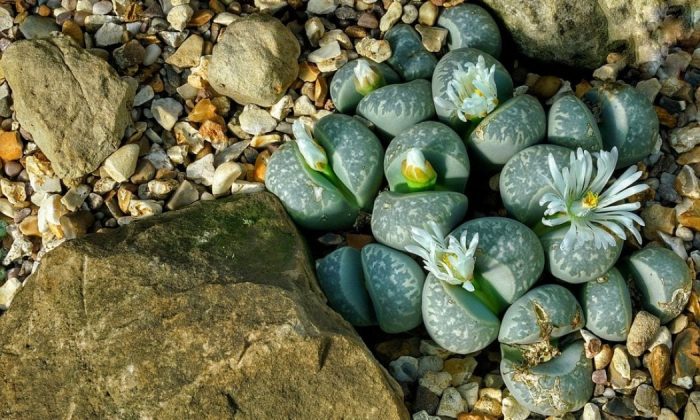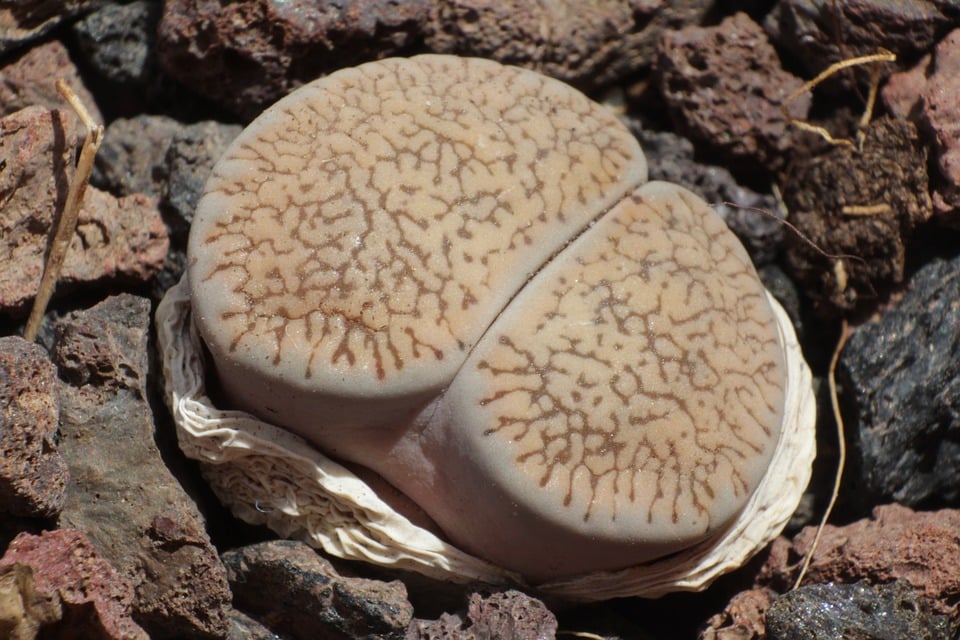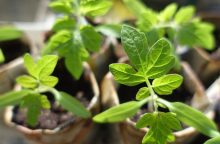Lithops and other living stones. How to care for them

Plants of the Lithops genus belonging to the Aizoaceae family and are commonly referred to as living stones because they resemble rock fragments that you can find in nature. This is a great example of mimicry, i.e. living organisms taking shape of their surroundings to protect themselves from predators. Thanks to this mechanism, living stones are barely visible and that is how they survive.
Are they difficult to grow?
There are many myths, superstitions and misconceptions about living stones. They are considered highly demanding and difficult to grow. This is not entirely true, but if you want to grow living stones, it is very important to know the conditions in which they live in nature and then you need to imitate them. Living stones come from desert regions of southern Africa . Despite some climatic differences existing in these regions, the tropical climate is extremely dry. There is low annual rainfall, usually below 200 mm per square meter.
- There are also areas were rainfall is less than 100 mm per year but the lack of rainwater is somehow compensated by a dense fog and dew.</ li >
Another thing that makes the life of lithops hard is temperature fluctuation. During the day the temperature may climb up to 40 degrees Celsius and can drop below zero at night. Also, soil with little nutrients and consisting mainly of quartz, granite, sandstone, limestone and clay does not provide the best conditions for growth.
Photo: Pixabay
Where can you grow living stones?
There is a misconception that lithops can only be grown in greenhouses. A sunny windowsill in your apartment is actually an ideal this purpose. In summer, the plant should not be in a strong shade, and in winter the surrounding temperature should be kept on the low side (up to 15 °C). Another important factors are the material of the pot and its size – the pot should not be too wide and too shallow. Adult roots of lithops are about 7 cm, so depth of the pot should be 8 cm. Flower pots should have drainage holes at the bottom.
What about the soil?
The substrate for lithops should be permeable. It should contain gravel, coarse gravel, sand and other materials to increase permeability of the substrate. These shall make up to 60 to 70% of the substrate. You should transplant living stone only if the plant no longer fits in the pot. If you do, use a pot with a diameter about 1-2 cm bigger than the previous one. Living stones can be planted all year round. An interesting fact: transplanted plants should not be watered immediately. You should wait for few days before watering.
How much water do living stones need?
You should start watering in the spring when the plants show signs of awakening (new leaves appear) and that is usually at the turn of March and April. The first watering should not be abundant – the plants still have a reserve of water in old leaves. When the leaves are being formed, you should water more often, but only when the substrate has dried out completely . Young plants should be watered more often than old ones. Water abundantly, but not often. When the flowering period ends in autumn, you should gradually stop watering and from November to mid-March, you don’t need to water living stones at all.
As with any succulent, a lack of water is better than too much water.
Fertilizing and propagating
You can use cactus fertilizers but half the concentration recommended by the manufacturer. Lithops can only be propagated generatively, i.e. by sowing seeds and thanks to this type of propagation, you can build a large collection in a relatively short time and it will cost you very little. Vegetative propagation through cuttings obtained from larger plans is not recommended because there is a high risk that the cutting will damage the mother plant and you will lose it.
Preview photo: Pixabay

Gardening is my hobby, I have a lot of experience and I am happy to share it.









0 comments